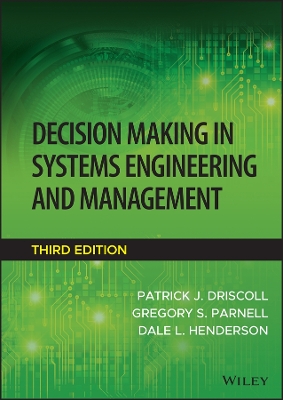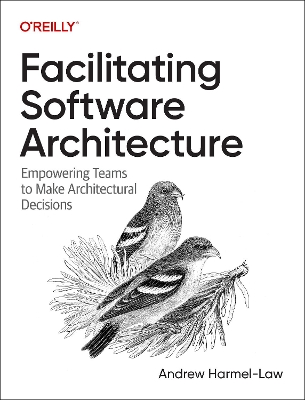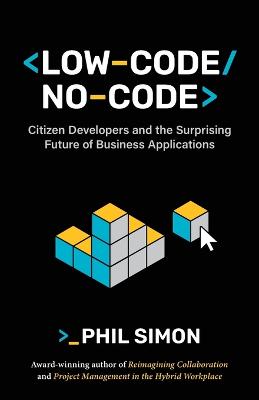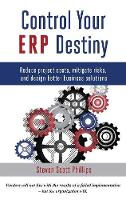Decision Making in Systems Engineering and Management
 -15%
portes grátis
-15%
portes grátis
Decision Making in Systems Engineering and Management
Parnell, Gregory S.; Driscoll, Patrick J.; Henderson, Dale L.
John Wiley & Sons Inc
10/2022
576
Dura
Inglês
9781119901402
15 a 20 dias
666
Descrição não disponível.
List of Figures xiii
List of Tables xxiii
1 Working with Systems 1
1.1 Introduction 1
1.2 The Systems Engineering Perspective 7
1.2.1 Systems Trends That Challenge System Engineers 8
1.2.2 Fundamental Tasks of Systems Engineers 12
1.2.3 Relationship of Systems Engineers to Other Engineering Disciplines 14
1.2.4 Education, Training, and Knowledge of Systems Engineers 15
1.3 Systems thinking 17
1.4 System life cycles 20
1.4.1 System life cycle model 23
1.5 Other major system life cycle models 29
1.6 Systems Decision Process (SDP) 34
1.7 Stakeholders and Vested Interests 39
References 47
2 Applied Systems Thinking 51
2.1 Holism Framing
Systems 51
2.1.1 Systems versus Analytic Thinking 54
2.1.2 Check on Learning 56
2.2 Element Dependencies 57
2.2.1 Check on Learning 58
2.3 Expansive and Contractive Thinking 59
2.3.1 Check on Learning 60
2.4 Structure 61
2.5 Classifying Systems 68
2.6 Boundaries 69
2.7 Visibility and Spatial Arrangement 72
2.7.1 Visibility 72
2.7.2 Spatial Arrangement 74
2.7.3 Check on Learning 76
2.8 Evolution and Dynamics 77
References 81
3 System Representations 83
3.1 Introduction 83
3.2 System Model Concepts 84
3.2.1 What Models Are 85
3.2.2 Role of Models in Solution Design 86
3.2.3 Qualities of useful models 87
3.2.4 Building System Models 89
3.2.5 Characteristics of models 95
3.2.6 Exercise the Model 96
3.2.7 Revise the model 97
3.3 Systemigrams 98
3.3.1 Systemigram Rules 99
3.4 Directional Dependency (D2) Diagrams 102
3.4.1 D2 diagrams into math representations 103
3.5 DSM and DMM Models 107
3.5.1 Dependency Structure Matrix (DSM) 108
3.5.2 System Adjacency Matrices 114
3.5.3 Check on Learning 120
3.5.4 Domain Mapping Matrix (DMM) 120
3.6 System Dynamics 122
3.7 IDEF0 Models 129
3.8 Simulation Modeling 138
3.8.1 Analytical Methods versus Simulation 138
3.8.2 Check on Learning 143
3.9 Determining Simulation Sample Size 143
References 147
4 The Systems Decision Process 151
4.1 Introduction 151
4.2 Value versus Alternative Focused Thinking 151
4.3 The SDP in Detail 154
4.3.1 The System Environment 156
4.3.2 When to Use the Systems Decision Process 159
4.3.3 Check on Learning 161
4.4 The Role of Stakeholders 164
References 169
5 Problem Definition 171
5.1 Purpose of the Problem Definition Phase 171
5.1.1 Comparison with Other Systems Engineering Processes 173
5.2 Research and "What is?" 174
5.2.1 Check on Learning 178
5.3 Stakeholder Analysis 179
5.3.1 Techniques for Stakeholder Analysis 181
5.3.2 At Completion FCR
Matrix 195
5.4 Requirements Analysis 197
5.4.1 Margins 201
5.5 Functional Analysis 204
5.6 Assessing System Readiness 213
5.7 Initial Risk Assessment 218
5.7.1 Risk identification 219
5.7.2 Risk Mitigation 229
References 231
6 Value Modeling 235
6.1 Introduction 235
6.2 Qualitative Value Modeling 239
6.2.1 Measures 242
6.3 Quantitative Value Model 249
6.3.1 Value Functions 251
6.3.2 Value Increment Method 256
6.3.3 Weighting Options 259
References 275
7 Solution Design 277
7.1 Introduction 277
7.2 Ideation Techniques 279
7.2.1 Brainstorming 279
7.2.2 Brainwriting 282
7.2.3 Design Thinking 282
7.2.4 Affinity Diagramming 284
7.2.5 Delphi 285
7.2.6 Groupware 287
7.2.7 Lateral and Parallel Thinking and Six Thinking Hats 287
7.2.8 Morphology 287
7.2.9 EndsMeans
Chains 289
7.2.10 Other Ideation Techniques 289
7.3 Screening and Feasibility 291
7.4 Improving Candidate Alternatives 296
7.4.1 Design of Experiments 299
7.4.2 Fractional factorial design 304
7.4.3 Pareto analysis 312
References 315
8 Costing Systems 317
8.1 Introduction 317
8.2 Types of Costs 323
8.3 Cost Estimating Techniques 324
8.3.1 Estimating by Analogy 325
8.3.2 Parametric Estimation Using Cost Estimating Relationships 326
8.3.3 Learning Curves 339
8.4 Time Effects on Cost 345
8.4.1 Time Value of Money 345
8.4.2 Inflation 346
8.4.3 Net Present Value 348
8.4.4 Breakeven Analysis and Replacement Analysis 350
References 353
9 Decision Making via Tradespace Analysis 355
9.1 Introduction 355
9.2 Tradespace Properties 358
9.3 Scoring Solution Alternatives 360
9.4 Scoring Options 363
9.4.1 Candidate Systems Scoring 364
9.4.2 Candidate Components Scoring 367
9.5 Tradespace Analysis on Scoring Results 372
9.5.1 Analyzing Sensitivity on Weights 377
9.5.2 Sensitivity Analysis on Weights Using Excel 379
9.6 Applying Valuefocused
Thinking 380
9.6.1 Improving nonDominated
Alternatives 384
9.6.2 Improving Dominated Alternatives 385
9.7 Supporting the Tradespace Decision 386
9.8 Use valuefocused
thinking to improve solutions 388
9.8.1 Decision Analysis of Dependent Risks 389
9.9 Reporting and Decision Handoff 392
9.9.1 Developing the Report 392
9.9.2 Developing the Presentation 393
9.9.3 Presenting Analysis Results 394
9.9.4 Concluding the Presentation 395
9.9.5 Using a Storyline Approach 396
References 399
10 Stochastic Tradespace Analysis 401
10.1 Introduction 401
10.2 Uncertainty Concepts 403
10.3 Flaw of Averages Considerations 406
10.4 Uncertainty Distributions 409
10.5 Monte Carlo Uncertainty Simulation 410
10.6 Cost Uncertainty Modeling 413
10.7 Realization Analysis 417
10.7.1 Level 1 Analysis Choice
Set Reduction 419
References 429
11 System Reliability 433
11.1 Modeling System Reliability 433
11.2 Math Models in Reliability 434
11.2.1 Common Continuous Reliability Distributions 438
11.2.2 Common Discrete Distributions 444
11.2.3 Check on Learning 446
11.3 Reliability Block Diagrams 446
11.3.1 Series System 449
11.3.2 Parallel System 454
11.3.3 Combined Series and Parallel RBD 455
11.3.4 Koutof
N Systems 456
11.3.5 Complex Systems 456
11.4 Component Reliability Importance Measures 458
11.4.1 Importance Measure for Series System 459
11.4.2 Importance Measure for Parallel System 461
11.4.3 Check on Learning 463
11.5 Allocating and Improving Reliability 463
11.5.1 Check on Learning 465
11.6 Markov models of repairable systems 465
11.6.1 Kolmogorov Differential Equations 466
11.6.2 Transient Analysis 466
11.6.3 Steady State Analysis 468
11.6.4 CTMC Models of Repairable Systems 469
11.6.5 Modeling Multiple Machine Problems 471
References 477
12 Solution Implementation 479
12.1 Introduction 479
12.2 Solution Implementation Phase 481
12.3 The Initiating Process 483
12.4 Planning 485
12.5 Executing 488
12.6 Monitoring and Controlling 489
12.7 Closing 492
12.8 Implementation During Life Cycle Stages 492
12.8.1 Implementation in "Produce the System" 492
12.8.2 Implementation in "Deploy the System" 494
12.8.3 Implementation in "Operate the System" 496
12.8.4 Check on Learning 499
References 503
13 EpilogueProfessional
Practice 505
13.1 Systems Engineering Activities 507
13.2 Working with the systems development team 510
13.3 Building an Interdisciplinary Team 513
13.4 Systems engineering responsibilities 517
13.5 Roles of the Systems Engineer 524
13.6 Characteristics of the Ideal Systems Engineer 525
13.7 Summary 526
References 527
Appendix A: Realization Analysis Levels 0 and 2 529
A.1 Level 0 Analysis Refined
Choice Set Identification 530
A.2 Level 2 Analysis Postselection
Insights 533
References 537
Appendix B: Software Fundamentals 539
B.1 SystemiTool 539
B.2 Cambridge Advanced Modeller (CAM) 540
B.3 Mathematica 542
B.4 Gephi 543
B.5 Vensim PLE 544
B.6 SIPmath 545
List of Tables xxiii
1 Working with Systems 1
1.1 Introduction 1
1.2 The Systems Engineering Perspective 7
1.2.1 Systems Trends That Challenge System Engineers 8
1.2.2 Fundamental Tasks of Systems Engineers 12
1.2.3 Relationship of Systems Engineers to Other Engineering Disciplines 14
1.2.4 Education, Training, and Knowledge of Systems Engineers 15
1.3 Systems thinking 17
1.4 System life cycles 20
1.4.1 System life cycle model 23
1.5 Other major system life cycle models 29
1.6 Systems Decision Process (SDP) 34
1.7 Stakeholders and Vested Interests 39
References 47
2 Applied Systems Thinking 51
2.1 Holism Framing
Systems 51
2.1.1 Systems versus Analytic Thinking 54
2.1.2 Check on Learning 56
2.2 Element Dependencies 57
2.2.1 Check on Learning 58
2.3 Expansive and Contractive Thinking 59
2.3.1 Check on Learning 60
2.4 Structure 61
2.5 Classifying Systems 68
2.6 Boundaries 69
2.7 Visibility and Spatial Arrangement 72
2.7.1 Visibility 72
2.7.2 Spatial Arrangement 74
2.7.3 Check on Learning 76
2.8 Evolution and Dynamics 77
References 81
3 System Representations 83
3.1 Introduction 83
3.2 System Model Concepts 84
3.2.1 What Models Are 85
3.2.2 Role of Models in Solution Design 86
3.2.3 Qualities of useful models 87
3.2.4 Building System Models 89
3.2.5 Characteristics of models 95
3.2.6 Exercise the Model 96
3.2.7 Revise the model 97
3.3 Systemigrams 98
3.3.1 Systemigram Rules 99
3.4 Directional Dependency (D2) Diagrams 102
3.4.1 D2 diagrams into math representations 103
3.5 DSM and DMM Models 107
3.5.1 Dependency Structure Matrix (DSM) 108
3.5.2 System Adjacency Matrices 114
3.5.3 Check on Learning 120
3.5.4 Domain Mapping Matrix (DMM) 120
3.6 System Dynamics 122
3.7 IDEF0 Models 129
3.8 Simulation Modeling 138
3.8.1 Analytical Methods versus Simulation 138
3.8.2 Check on Learning 143
3.9 Determining Simulation Sample Size 143
References 147
4 The Systems Decision Process 151
4.1 Introduction 151
4.2 Value versus Alternative Focused Thinking 151
4.3 The SDP in Detail 154
4.3.1 The System Environment 156
4.3.2 When to Use the Systems Decision Process 159
4.3.3 Check on Learning 161
4.4 The Role of Stakeholders 164
References 169
5 Problem Definition 171
5.1 Purpose of the Problem Definition Phase 171
5.1.1 Comparison with Other Systems Engineering Processes 173
5.2 Research and "What is?" 174
5.2.1 Check on Learning 178
5.3 Stakeholder Analysis 179
5.3.1 Techniques for Stakeholder Analysis 181
5.3.2 At Completion FCR
Matrix 195
5.4 Requirements Analysis 197
5.4.1 Margins 201
5.5 Functional Analysis 204
5.6 Assessing System Readiness 213
5.7 Initial Risk Assessment 218
5.7.1 Risk identification 219
5.7.2 Risk Mitigation 229
References 231
6 Value Modeling 235
6.1 Introduction 235
6.2 Qualitative Value Modeling 239
6.2.1 Measures 242
6.3 Quantitative Value Model 249
6.3.1 Value Functions 251
6.3.2 Value Increment Method 256
6.3.3 Weighting Options 259
References 275
7 Solution Design 277
7.1 Introduction 277
7.2 Ideation Techniques 279
7.2.1 Brainstorming 279
7.2.2 Brainwriting 282
7.2.3 Design Thinking 282
7.2.4 Affinity Diagramming 284
7.2.5 Delphi 285
7.2.6 Groupware 287
7.2.7 Lateral and Parallel Thinking and Six Thinking Hats 287
7.2.8 Morphology 287
7.2.9 EndsMeans
Chains 289
7.2.10 Other Ideation Techniques 289
7.3 Screening and Feasibility 291
7.4 Improving Candidate Alternatives 296
7.4.1 Design of Experiments 299
7.4.2 Fractional factorial design 304
7.4.3 Pareto analysis 312
References 315
8 Costing Systems 317
8.1 Introduction 317
8.2 Types of Costs 323
8.3 Cost Estimating Techniques 324
8.3.1 Estimating by Analogy 325
8.3.2 Parametric Estimation Using Cost Estimating Relationships 326
8.3.3 Learning Curves 339
8.4 Time Effects on Cost 345
8.4.1 Time Value of Money 345
8.4.2 Inflation 346
8.4.3 Net Present Value 348
8.4.4 Breakeven Analysis and Replacement Analysis 350
References 353
9 Decision Making via Tradespace Analysis 355
9.1 Introduction 355
9.2 Tradespace Properties 358
9.3 Scoring Solution Alternatives 360
9.4 Scoring Options 363
9.4.1 Candidate Systems Scoring 364
9.4.2 Candidate Components Scoring 367
9.5 Tradespace Analysis on Scoring Results 372
9.5.1 Analyzing Sensitivity on Weights 377
9.5.2 Sensitivity Analysis on Weights Using Excel 379
9.6 Applying Valuefocused
Thinking 380
9.6.1 Improving nonDominated
Alternatives 384
9.6.2 Improving Dominated Alternatives 385
9.7 Supporting the Tradespace Decision 386
9.8 Use valuefocused
thinking to improve solutions 388
9.8.1 Decision Analysis of Dependent Risks 389
9.9 Reporting and Decision Handoff 392
9.9.1 Developing the Report 392
9.9.2 Developing the Presentation 393
9.9.3 Presenting Analysis Results 394
9.9.4 Concluding the Presentation 395
9.9.5 Using a Storyline Approach 396
References 399
10 Stochastic Tradespace Analysis 401
10.1 Introduction 401
10.2 Uncertainty Concepts 403
10.3 Flaw of Averages Considerations 406
10.4 Uncertainty Distributions 409
10.5 Monte Carlo Uncertainty Simulation 410
10.6 Cost Uncertainty Modeling 413
10.7 Realization Analysis 417
10.7.1 Level 1 Analysis Choice
Set Reduction 419
References 429
11 System Reliability 433
11.1 Modeling System Reliability 433
11.2 Math Models in Reliability 434
11.2.1 Common Continuous Reliability Distributions 438
11.2.2 Common Discrete Distributions 444
11.2.3 Check on Learning 446
11.3 Reliability Block Diagrams 446
11.3.1 Series System 449
11.3.2 Parallel System 454
11.3.3 Combined Series and Parallel RBD 455
11.3.4 Koutof
N Systems 456
11.3.5 Complex Systems 456
11.4 Component Reliability Importance Measures 458
11.4.1 Importance Measure for Series System 459
11.4.2 Importance Measure for Parallel System 461
11.4.3 Check on Learning 463
11.5 Allocating and Improving Reliability 463
11.5.1 Check on Learning 465
11.6 Markov models of repairable systems 465
11.6.1 Kolmogorov Differential Equations 466
11.6.2 Transient Analysis 466
11.6.3 Steady State Analysis 468
11.6.4 CTMC Models of Repairable Systems 469
11.6.5 Modeling Multiple Machine Problems 471
References 477
12 Solution Implementation 479
12.1 Introduction 479
12.2 Solution Implementation Phase 481
12.3 The Initiating Process 483
12.4 Planning 485
12.5 Executing 488
12.6 Monitoring and Controlling 489
12.7 Closing 492
12.8 Implementation During Life Cycle Stages 492
12.8.1 Implementation in "Produce the System" 492
12.8.2 Implementation in "Deploy the System" 494
12.8.3 Implementation in "Operate the System" 496
12.8.4 Check on Learning 499
References 503
13 EpilogueProfessional
Practice 505
13.1 Systems Engineering Activities 507
13.2 Working with the systems development team 510
13.3 Building an Interdisciplinary Team 513
13.4 Systems engineering responsibilities 517
13.5 Roles of the Systems Engineer 524
13.6 Characteristics of the Ideal Systems Engineer 525
13.7 Summary 526
References 527
Appendix A: Realization Analysis Levels 0 and 2 529
A.1 Level 0 Analysis Refined
Choice Set Identification 530
A.2 Level 2 Analysis Postselection
Insights 533
References 537
Appendix B: Software Fundamentals 539
B.1 SystemiTool 539
B.2 Cambridge Advanced Modeller (CAM) 540
B.3 Mathematica 542
B.4 Gephi 543
B.5 Vensim PLE 544
B.6 SIPmath 545
Este título pertence ao(s) assunto(s) indicados(s). Para ver outros títulos clique no assunto desejado.
Systems engineering decision making; systems thinking; systems engineering textbook; systems engineering guide; systems thinking textbook; systems thinking applications; applied systems thinking; system representations; holism; multi-criteria value modeling
List of Figures xiii
List of Tables xxiii
1 Working with Systems 1
1.1 Introduction 1
1.2 The Systems Engineering Perspective 7
1.2.1 Systems Trends That Challenge System Engineers 8
1.2.2 Fundamental Tasks of Systems Engineers 12
1.2.3 Relationship of Systems Engineers to Other Engineering Disciplines 14
1.2.4 Education, Training, and Knowledge of Systems Engineers 15
1.3 Systems thinking 17
1.4 System life cycles 20
1.4.1 System life cycle model 23
1.5 Other major system life cycle models 29
1.6 Systems Decision Process (SDP) 34
1.7 Stakeholders and Vested Interests 39
References 47
2 Applied Systems Thinking 51
2.1 Holism Framing
Systems 51
2.1.1 Systems versus Analytic Thinking 54
2.1.2 Check on Learning 56
2.2 Element Dependencies 57
2.2.1 Check on Learning 58
2.3 Expansive and Contractive Thinking 59
2.3.1 Check on Learning 60
2.4 Structure 61
2.5 Classifying Systems 68
2.6 Boundaries 69
2.7 Visibility and Spatial Arrangement 72
2.7.1 Visibility 72
2.7.2 Spatial Arrangement 74
2.7.3 Check on Learning 76
2.8 Evolution and Dynamics 77
References 81
3 System Representations 83
3.1 Introduction 83
3.2 System Model Concepts 84
3.2.1 What Models Are 85
3.2.2 Role of Models in Solution Design 86
3.2.3 Qualities of useful models 87
3.2.4 Building System Models 89
3.2.5 Characteristics of models 95
3.2.6 Exercise the Model 96
3.2.7 Revise the model 97
3.3 Systemigrams 98
3.3.1 Systemigram Rules 99
3.4 Directional Dependency (D2) Diagrams 102
3.4.1 D2 diagrams into math representations 103
3.5 DSM and DMM Models 107
3.5.1 Dependency Structure Matrix (DSM) 108
3.5.2 System Adjacency Matrices 114
3.5.3 Check on Learning 120
3.5.4 Domain Mapping Matrix (DMM) 120
3.6 System Dynamics 122
3.7 IDEF0 Models 129
3.8 Simulation Modeling 138
3.8.1 Analytical Methods versus Simulation 138
3.8.2 Check on Learning 143
3.9 Determining Simulation Sample Size 143
References 147
4 The Systems Decision Process 151
4.1 Introduction 151
4.2 Value versus Alternative Focused Thinking 151
4.3 The SDP in Detail 154
4.3.1 The System Environment 156
4.3.2 When to Use the Systems Decision Process 159
4.3.3 Check on Learning 161
4.4 The Role of Stakeholders 164
References 169
5 Problem Definition 171
5.1 Purpose of the Problem Definition Phase 171
5.1.1 Comparison with Other Systems Engineering Processes 173
5.2 Research and "What is?" 174
5.2.1 Check on Learning 178
5.3 Stakeholder Analysis 179
5.3.1 Techniques for Stakeholder Analysis 181
5.3.2 At Completion FCR
Matrix 195
5.4 Requirements Analysis 197
5.4.1 Margins 201
5.5 Functional Analysis 204
5.6 Assessing System Readiness 213
5.7 Initial Risk Assessment 218
5.7.1 Risk identification 219
5.7.2 Risk Mitigation 229
References 231
6 Value Modeling 235
6.1 Introduction 235
6.2 Qualitative Value Modeling 239
6.2.1 Measures 242
6.3 Quantitative Value Model 249
6.3.1 Value Functions 251
6.3.2 Value Increment Method 256
6.3.3 Weighting Options 259
References 275
7 Solution Design 277
7.1 Introduction 277
7.2 Ideation Techniques 279
7.2.1 Brainstorming 279
7.2.2 Brainwriting 282
7.2.3 Design Thinking 282
7.2.4 Affinity Diagramming 284
7.2.5 Delphi 285
7.2.6 Groupware 287
7.2.7 Lateral and Parallel Thinking and Six Thinking Hats 287
7.2.8 Morphology 287
7.2.9 EndsMeans
Chains 289
7.2.10 Other Ideation Techniques 289
7.3 Screening and Feasibility 291
7.4 Improving Candidate Alternatives 296
7.4.1 Design of Experiments 299
7.4.2 Fractional factorial design 304
7.4.3 Pareto analysis 312
References 315
8 Costing Systems 317
8.1 Introduction 317
8.2 Types of Costs 323
8.3 Cost Estimating Techniques 324
8.3.1 Estimating by Analogy 325
8.3.2 Parametric Estimation Using Cost Estimating Relationships 326
8.3.3 Learning Curves 339
8.4 Time Effects on Cost 345
8.4.1 Time Value of Money 345
8.4.2 Inflation 346
8.4.3 Net Present Value 348
8.4.4 Breakeven Analysis and Replacement Analysis 350
References 353
9 Decision Making via Tradespace Analysis 355
9.1 Introduction 355
9.2 Tradespace Properties 358
9.3 Scoring Solution Alternatives 360
9.4 Scoring Options 363
9.4.1 Candidate Systems Scoring 364
9.4.2 Candidate Components Scoring 367
9.5 Tradespace Analysis on Scoring Results 372
9.5.1 Analyzing Sensitivity on Weights 377
9.5.2 Sensitivity Analysis on Weights Using Excel 379
9.6 Applying Valuefocused
Thinking 380
9.6.1 Improving nonDominated
Alternatives 384
9.6.2 Improving Dominated Alternatives 385
9.7 Supporting the Tradespace Decision 386
9.8 Use valuefocused
thinking to improve solutions 388
9.8.1 Decision Analysis of Dependent Risks 389
9.9 Reporting and Decision Handoff 392
9.9.1 Developing the Report 392
9.9.2 Developing the Presentation 393
9.9.3 Presenting Analysis Results 394
9.9.4 Concluding the Presentation 395
9.9.5 Using a Storyline Approach 396
References 399
10 Stochastic Tradespace Analysis 401
10.1 Introduction 401
10.2 Uncertainty Concepts 403
10.3 Flaw of Averages Considerations 406
10.4 Uncertainty Distributions 409
10.5 Monte Carlo Uncertainty Simulation 410
10.6 Cost Uncertainty Modeling 413
10.7 Realization Analysis 417
10.7.1 Level 1 Analysis Choice
Set Reduction 419
References 429
11 System Reliability 433
11.1 Modeling System Reliability 433
11.2 Math Models in Reliability 434
11.2.1 Common Continuous Reliability Distributions 438
11.2.2 Common Discrete Distributions 444
11.2.3 Check on Learning 446
11.3 Reliability Block Diagrams 446
11.3.1 Series System 449
11.3.2 Parallel System 454
11.3.3 Combined Series and Parallel RBD 455
11.3.4 Koutof
N Systems 456
11.3.5 Complex Systems 456
11.4 Component Reliability Importance Measures 458
11.4.1 Importance Measure for Series System 459
11.4.2 Importance Measure for Parallel System 461
11.4.3 Check on Learning 463
11.5 Allocating and Improving Reliability 463
11.5.1 Check on Learning 465
11.6 Markov models of repairable systems 465
11.6.1 Kolmogorov Differential Equations 466
11.6.2 Transient Analysis 466
11.6.3 Steady State Analysis 468
11.6.4 CTMC Models of Repairable Systems 469
11.6.5 Modeling Multiple Machine Problems 471
References 477
12 Solution Implementation 479
12.1 Introduction 479
12.2 Solution Implementation Phase 481
12.3 The Initiating Process 483
12.4 Planning 485
12.5 Executing 488
12.6 Monitoring and Controlling 489
12.7 Closing 492
12.8 Implementation During Life Cycle Stages 492
12.8.1 Implementation in "Produce the System" 492
12.8.2 Implementation in "Deploy the System" 494
12.8.3 Implementation in "Operate the System" 496
12.8.4 Check on Learning 499
References 503
13 EpilogueProfessional
Practice 505
13.1 Systems Engineering Activities 507
13.2 Working with the systems development team 510
13.3 Building an Interdisciplinary Team 513
13.4 Systems engineering responsibilities 517
13.5 Roles of the Systems Engineer 524
13.6 Characteristics of the Ideal Systems Engineer 525
13.7 Summary 526
References 527
Appendix A: Realization Analysis Levels 0 and 2 529
A.1 Level 0 Analysis Refined
Choice Set Identification 530
A.2 Level 2 Analysis Postselection
Insights 533
References 537
Appendix B: Software Fundamentals 539
B.1 SystemiTool 539
B.2 Cambridge Advanced Modeller (CAM) 540
B.3 Mathematica 542
B.4 Gephi 543
B.5 Vensim PLE 544
B.6 SIPmath 545
List of Tables xxiii
1 Working with Systems 1
1.1 Introduction 1
1.2 The Systems Engineering Perspective 7
1.2.1 Systems Trends That Challenge System Engineers 8
1.2.2 Fundamental Tasks of Systems Engineers 12
1.2.3 Relationship of Systems Engineers to Other Engineering Disciplines 14
1.2.4 Education, Training, and Knowledge of Systems Engineers 15
1.3 Systems thinking 17
1.4 System life cycles 20
1.4.1 System life cycle model 23
1.5 Other major system life cycle models 29
1.6 Systems Decision Process (SDP) 34
1.7 Stakeholders and Vested Interests 39
References 47
2 Applied Systems Thinking 51
2.1 Holism Framing
Systems 51
2.1.1 Systems versus Analytic Thinking 54
2.1.2 Check on Learning 56
2.2 Element Dependencies 57
2.2.1 Check on Learning 58
2.3 Expansive and Contractive Thinking 59
2.3.1 Check on Learning 60
2.4 Structure 61
2.5 Classifying Systems 68
2.6 Boundaries 69
2.7 Visibility and Spatial Arrangement 72
2.7.1 Visibility 72
2.7.2 Spatial Arrangement 74
2.7.3 Check on Learning 76
2.8 Evolution and Dynamics 77
References 81
3 System Representations 83
3.1 Introduction 83
3.2 System Model Concepts 84
3.2.1 What Models Are 85
3.2.2 Role of Models in Solution Design 86
3.2.3 Qualities of useful models 87
3.2.4 Building System Models 89
3.2.5 Characteristics of models 95
3.2.6 Exercise the Model 96
3.2.7 Revise the model 97
3.3 Systemigrams 98
3.3.1 Systemigram Rules 99
3.4 Directional Dependency (D2) Diagrams 102
3.4.1 D2 diagrams into math representations 103
3.5 DSM and DMM Models 107
3.5.1 Dependency Structure Matrix (DSM) 108
3.5.2 System Adjacency Matrices 114
3.5.3 Check on Learning 120
3.5.4 Domain Mapping Matrix (DMM) 120
3.6 System Dynamics 122
3.7 IDEF0 Models 129
3.8 Simulation Modeling 138
3.8.1 Analytical Methods versus Simulation 138
3.8.2 Check on Learning 143
3.9 Determining Simulation Sample Size 143
References 147
4 The Systems Decision Process 151
4.1 Introduction 151
4.2 Value versus Alternative Focused Thinking 151
4.3 The SDP in Detail 154
4.3.1 The System Environment 156
4.3.2 When to Use the Systems Decision Process 159
4.3.3 Check on Learning 161
4.4 The Role of Stakeholders 164
References 169
5 Problem Definition 171
5.1 Purpose of the Problem Definition Phase 171
5.1.1 Comparison with Other Systems Engineering Processes 173
5.2 Research and "What is?" 174
5.2.1 Check on Learning 178
5.3 Stakeholder Analysis 179
5.3.1 Techniques for Stakeholder Analysis 181
5.3.2 At Completion FCR
Matrix 195
5.4 Requirements Analysis 197
5.4.1 Margins 201
5.5 Functional Analysis 204
5.6 Assessing System Readiness 213
5.7 Initial Risk Assessment 218
5.7.1 Risk identification 219
5.7.2 Risk Mitigation 229
References 231
6 Value Modeling 235
6.1 Introduction 235
6.2 Qualitative Value Modeling 239
6.2.1 Measures 242
6.3 Quantitative Value Model 249
6.3.1 Value Functions 251
6.3.2 Value Increment Method 256
6.3.3 Weighting Options 259
References 275
7 Solution Design 277
7.1 Introduction 277
7.2 Ideation Techniques 279
7.2.1 Brainstorming 279
7.2.2 Brainwriting 282
7.2.3 Design Thinking 282
7.2.4 Affinity Diagramming 284
7.2.5 Delphi 285
7.2.6 Groupware 287
7.2.7 Lateral and Parallel Thinking and Six Thinking Hats 287
7.2.8 Morphology 287
7.2.9 EndsMeans
Chains 289
7.2.10 Other Ideation Techniques 289
7.3 Screening and Feasibility 291
7.4 Improving Candidate Alternatives 296
7.4.1 Design of Experiments 299
7.4.2 Fractional factorial design 304
7.4.3 Pareto analysis 312
References 315
8 Costing Systems 317
8.1 Introduction 317
8.2 Types of Costs 323
8.3 Cost Estimating Techniques 324
8.3.1 Estimating by Analogy 325
8.3.2 Parametric Estimation Using Cost Estimating Relationships 326
8.3.3 Learning Curves 339
8.4 Time Effects on Cost 345
8.4.1 Time Value of Money 345
8.4.2 Inflation 346
8.4.3 Net Present Value 348
8.4.4 Breakeven Analysis and Replacement Analysis 350
References 353
9 Decision Making via Tradespace Analysis 355
9.1 Introduction 355
9.2 Tradespace Properties 358
9.3 Scoring Solution Alternatives 360
9.4 Scoring Options 363
9.4.1 Candidate Systems Scoring 364
9.4.2 Candidate Components Scoring 367
9.5 Tradespace Analysis on Scoring Results 372
9.5.1 Analyzing Sensitivity on Weights 377
9.5.2 Sensitivity Analysis on Weights Using Excel 379
9.6 Applying Valuefocused
Thinking 380
9.6.1 Improving nonDominated
Alternatives 384
9.6.2 Improving Dominated Alternatives 385
9.7 Supporting the Tradespace Decision 386
9.8 Use valuefocused
thinking to improve solutions 388
9.8.1 Decision Analysis of Dependent Risks 389
9.9 Reporting and Decision Handoff 392
9.9.1 Developing the Report 392
9.9.2 Developing the Presentation 393
9.9.3 Presenting Analysis Results 394
9.9.4 Concluding the Presentation 395
9.9.5 Using a Storyline Approach 396
References 399
10 Stochastic Tradespace Analysis 401
10.1 Introduction 401
10.2 Uncertainty Concepts 403
10.3 Flaw of Averages Considerations 406
10.4 Uncertainty Distributions 409
10.5 Monte Carlo Uncertainty Simulation 410
10.6 Cost Uncertainty Modeling 413
10.7 Realization Analysis 417
10.7.1 Level 1 Analysis Choice
Set Reduction 419
References 429
11 System Reliability 433
11.1 Modeling System Reliability 433
11.2 Math Models in Reliability 434
11.2.1 Common Continuous Reliability Distributions 438
11.2.2 Common Discrete Distributions 444
11.2.3 Check on Learning 446
11.3 Reliability Block Diagrams 446
11.3.1 Series System 449
11.3.2 Parallel System 454
11.3.3 Combined Series and Parallel RBD 455
11.3.4 Koutof
N Systems 456
11.3.5 Complex Systems 456
11.4 Component Reliability Importance Measures 458
11.4.1 Importance Measure for Series System 459
11.4.2 Importance Measure for Parallel System 461
11.4.3 Check on Learning 463
11.5 Allocating and Improving Reliability 463
11.5.1 Check on Learning 465
11.6 Markov models of repairable systems 465
11.6.1 Kolmogorov Differential Equations 466
11.6.2 Transient Analysis 466
11.6.3 Steady State Analysis 468
11.6.4 CTMC Models of Repairable Systems 469
11.6.5 Modeling Multiple Machine Problems 471
References 477
12 Solution Implementation 479
12.1 Introduction 479
12.2 Solution Implementation Phase 481
12.3 The Initiating Process 483
12.4 Planning 485
12.5 Executing 488
12.6 Monitoring and Controlling 489
12.7 Closing 492
12.8 Implementation During Life Cycle Stages 492
12.8.1 Implementation in "Produce the System" 492
12.8.2 Implementation in "Deploy the System" 494
12.8.3 Implementation in "Operate the System" 496
12.8.4 Check on Learning 499
References 503
13 EpilogueProfessional
Practice 505
13.1 Systems Engineering Activities 507
13.2 Working with the systems development team 510
13.3 Building an Interdisciplinary Team 513
13.4 Systems engineering responsibilities 517
13.5 Roles of the Systems Engineer 524
13.6 Characteristics of the Ideal Systems Engineer 525
13.7 Summary 526
References 527
Appendix A: Realization Analysis Levels 0 and 2 529
A.1 Level 0 Analysis Refined
Choice Set Identification 530
A.2 Level 2 Analysis Postselection
Insights 533
References 537
Appendix B: Software Fundamentals 539
B.1 SystemiTool 539
B.2 Cambridge Advanced Modeller (CAM) 540
B.3 Mathematica 542
B.4 Gephi 543
B.5 Vensim PLE 544
B.6 SIPmath 545
Este título pertence ao(s) assunto(s) indicados(s). Para ver outros títulos clique no assunto desejado.







